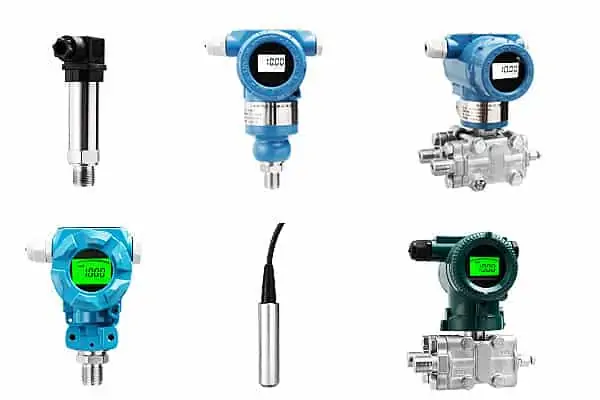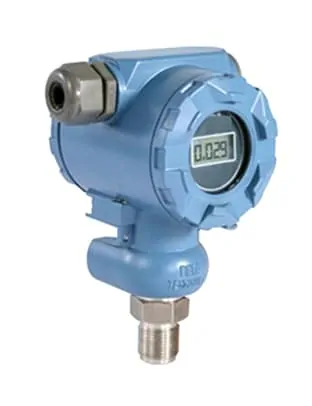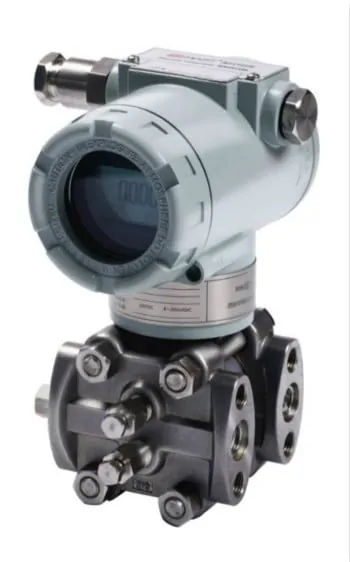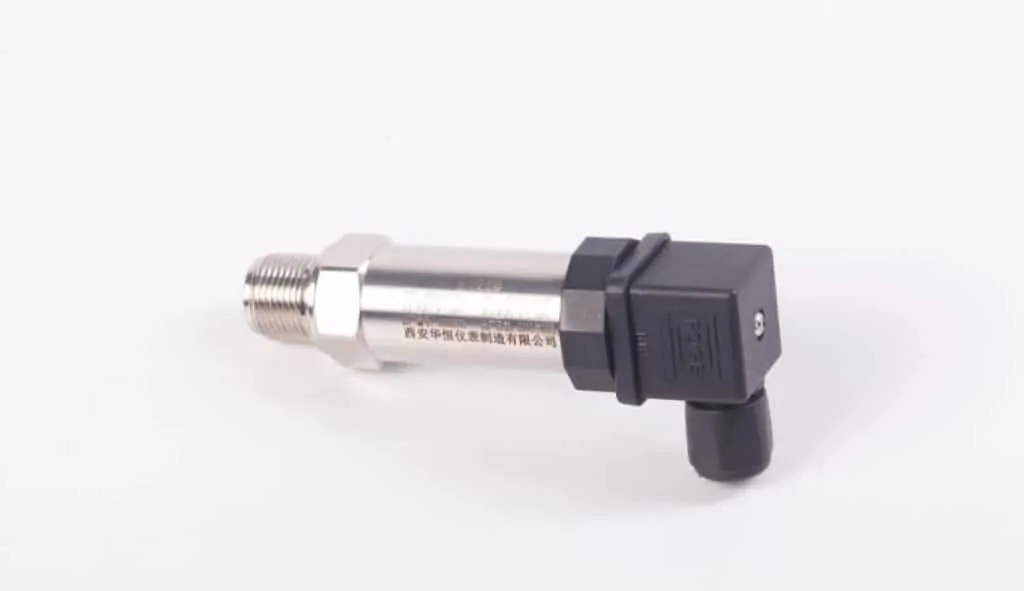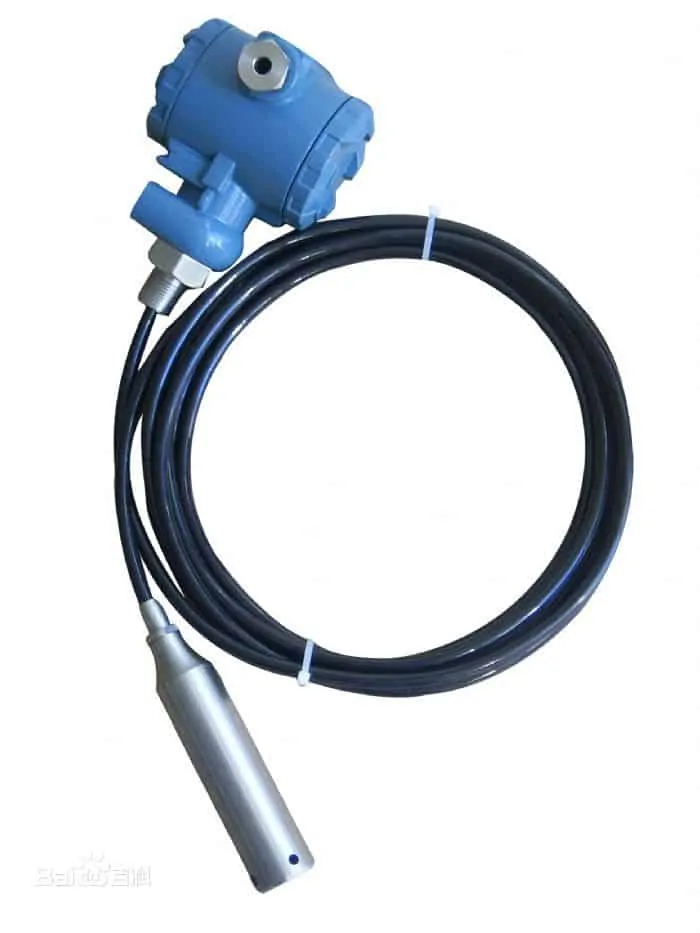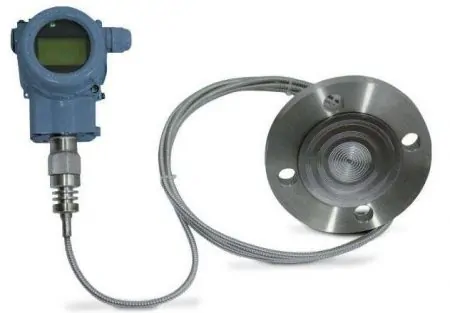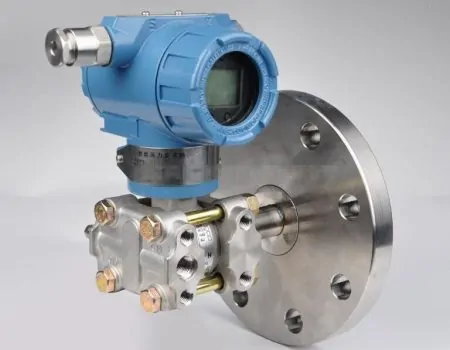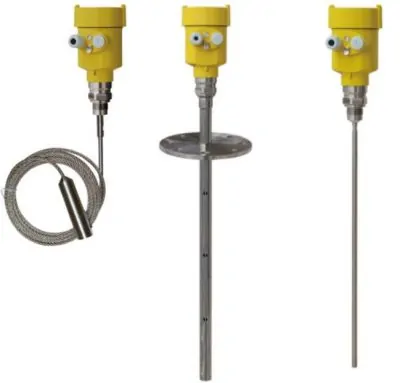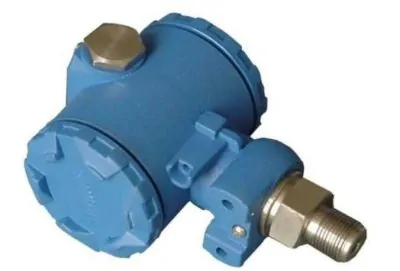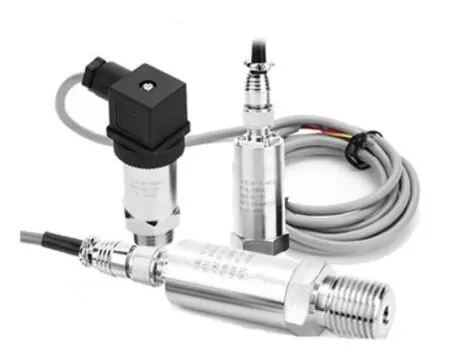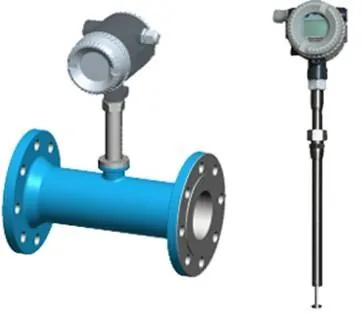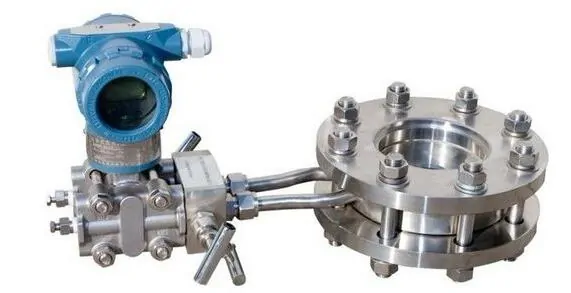HART pressure transmitter is the smart pressure transmitter in the process industry. With 4-20mA, HART. So, you can calibrate your pressure transmitters with HART communicators.
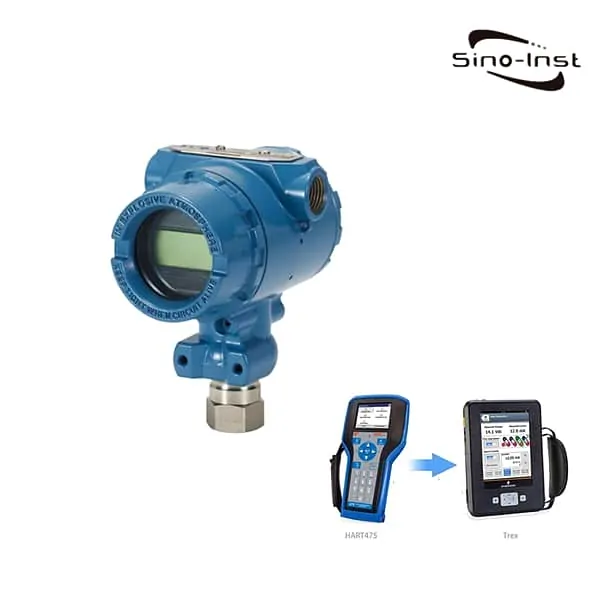
HART pressure transmitter configured through distributed control system (DCS) or HART communicator. The HART pressure transmitter is compatible with the Highway Addressable Remote Transmitter (HART) communication protocol. The HART function can transmit pressure transmitter data through an AC digital signal. The AC digital signal uses a 4-20mA analog output signal as a carrier. This eliminates the need for additional wires and connectors.
HH3151 HART Smart pressure transmitter that provides simplified field change, while communicating asset management data utilizing the latest HART 7 specification.
Sino-Inst offers a variety of HART pressure sensors for industrial pressure measurement. If you have any questions, please contact our sales engineers.
Features of HART pressure transmitter
HART pressure transmitter is a complete product line of liquid level, differential pressure, gauge pressure and absolute pressure transmitter. Models include flushing diaphragms and sanitary flanges for liquid level measurement, hydrostatic tank metering – HTG. And wetted parts of various materials to suit the process requirements.
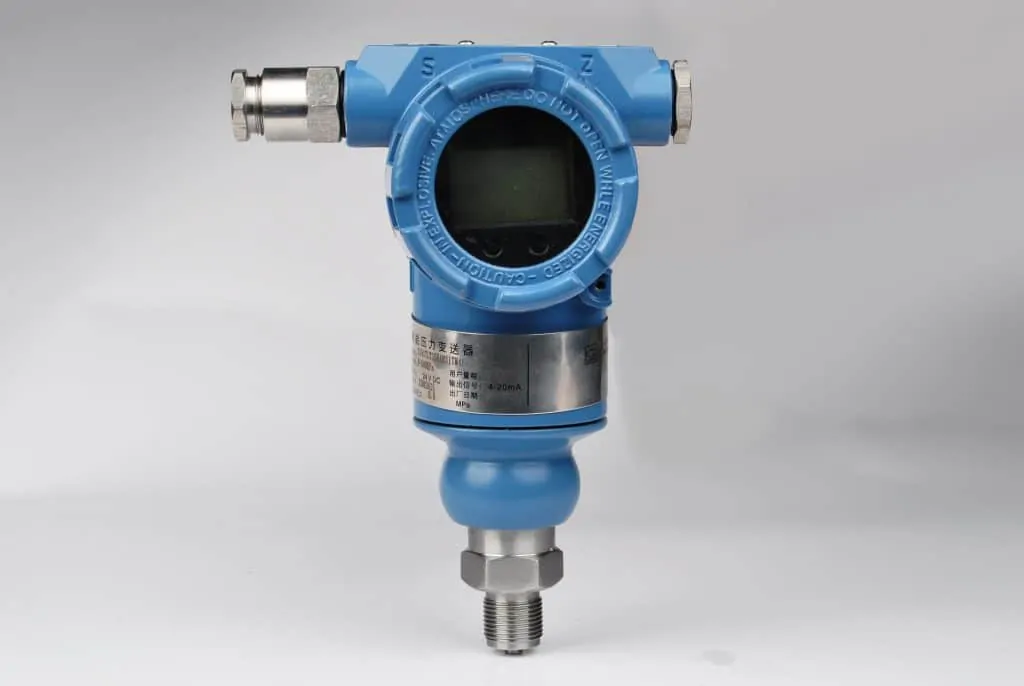
- All models can be supplied with various remote seals.
- Update output current in 100 ms with 0.75 µA/bit resolution;
- Improved performance due to dedicated math co-processor;
- Multi-drop operation mode;
- PID control function;
- Supports DTM and EDDL;
- Bi-directional flow measurement;
- With FMEDA analysis and MTBF of 244 year.
What is a HART transmitter?
HART transmitters are much more complicated.
The HART transmitter has the same pressure input and 4-20 mA output. But it also has an analog current loop output. The device contains some digital variables and settings. Access to these digital parameters requires the use of a HART configurator or communicator. This is essential for maintaining these devices.
Just like Hart Communicator 375.
In fact, many HART devices, cannot be maintained without access to digital parameters.
You may like: Verabar Flow Meter
What is HART calibrator?
HART calibrator is our HART communicator for calibrating instruments. For example pressure transmitter, DP transmitter, liquid level transmitter, flowmeter, and temperature transmitter.
HART communication protocol (Highway Addressable Remote Transducer) is a hybrid analog + digital industrial automation open protocol.
Its most significant advantage is that it can communicate through the traditional 4–20 mA analog instrument current loop, sharing only a pair of wires used by the analog host system.
We use this protocol in the HART calibrator.
HART communicator (such as HART 475) is the most common HART calibrator.
The proprietary calibration process ensures optimal temperature compensation. This limits the thermal impact on the sensor output.
It is suitable for the global process control industry. It provides a cost-effective solution for the use of conventional HART transmitters (such as the HART 475 field communicator).
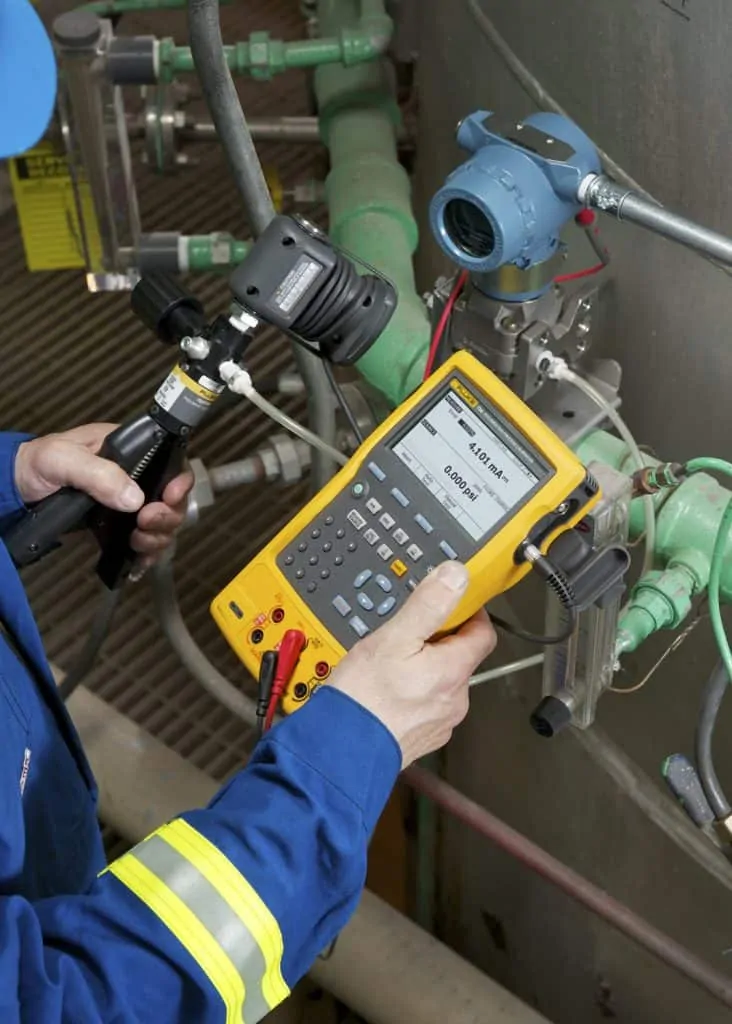
What is HART pressure transmitter?

HART pressure transmitter for configuration via distributed control system (DCS) or HART communicator.
The HART pressure transmitter is compatible with the Highway Addressable Remote Transmitter (HART) communication protocol. This protocol is the most popular standard used by intelligent field devices and is used by the process control industry.
The HART function can transmit pressure transmitter data through AC digital signals. It uses 4-20mA analog output signals as a carrier. There is no need for additional wires and connectors.
HART pressure transmitter can also be used with a paperless recorder.
How to calibrate HART pressure transmitters
A pressure transmitter is one of the most common instruments in a process plant. To assure its accuracy, it needs to be calibrated.
But what do you need to calibrate it and how is it done?
You may know how to calibrate a pressure transmitter? Or, how to calibrate a differential pressure transmitter? Then, calibrate HART pressure transmitters, kind of like pressure transmitter calibration using a hart communicator. Pressure transmitter manufacturers have improved accuracy and technology, designed into these smart pressure measurement devices.
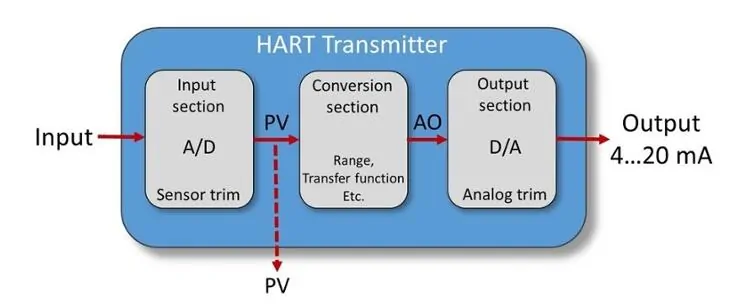
To calibrate a pressure transmitter, you need:
loop supply (if not connected to the controls system’s loop supply);
a pressure generator to generate input pressure;
an accurate calibrator to measure the input pressure;
an accurate calibrator to measure the output mA current.
Typically, the pressure transmitter is a HART protocol transmitter. So in case, there is any need to adjust/trim it, you will need to use a device supporting HART communication.
How to calibrate HART pressure transmitters?
Explaining how to do the calibration would result in quite a long text. So we have put together a video for you instead. The video shows you how to calibrate and trim a HART pressure transmitter. Please have a look at the video: How to calibrate HART pressure transmitters
Video source: https://www.youtube.com/watch?v=4wLCqH0M9fU&t=9s
HART Pressure Transmitters Calibration Steps
How to calibrate HART pressure transmitters?
Total Time:
1. Isolate the transmitter from the process being measured and its loop wiring.
2. If measuring the mA signal across the transmitter test diode leave the wires intact, but note this method does not give the best mA measurement accuracy.
3. Connect the mA measurement jacks of the 754 to the transmitter.
4. Connect the pressure module cable to the 475, and connect the transmitter test hose from the hand pump to the transmitter.
Press the HART button on the calibrator to see the configuration of the transmitter.
5. Press HART again and the calibrator will offer the correct measure/source combination for the test.
6. If documenting the calibration press As-Found, input the test tolerance and follow the prompts.
7. If the measured mA signal at the test points is found within tolerance the test is complete.
If not, change is required.
Select, adjust, and trim the pressure zero, mA output signal and input sensor.
If you still do not know, how to check the pressure transmitter? Or, how to calibrate a pressure transmitter.
Just contact us.
HART pressure transmitter working principle
HART pressure transmitter is one type of smart pressure transmitter.
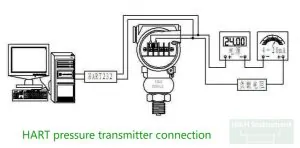
Principle and Application of Diffusion Silicon Pressure Transmitter
The pressure of the measured medium directly acts on the diaphragm of the sensor (stainless steel or ceramic). Causing the diaphragm to generate a micro-displacement proportional to the pressure of the medium. The resistance value of the sensor changes. The electronic circuit detects this change and converts and outputs a standard measurement signal corresponding to this pressure.
Principle of capacitive pressure transmitter
The capacitive pressure transmitter is mainly composed of a capacitance sensor and circuit board. The sensor implements pressure-capacitance conversion. The circuit board converts the capacitance to a two-wire 4-20mA. When the process pressure is applied to the isolation diaphragm from both sides (or one side) of the measuring chamber, it is transferred to the central diaphragm of the chamber through the silicone oil filling liquid. The central diaphragm is a diaphragm with tensioned edges. Under the action of pressure, a corresponding displacement is generated. This displacement creates a change in differential capacitance! And through the adjustment, oscillation, and amplification of the electronic circuit board! Converted into 4-20mA signal output! The output current is directly proportional to the process pressure!
HART Smart Explosion Proof Pressure Transmitter
HART Explosion-proof pressure transmitters are available in a wide range of specifications. Easy to install and use, safe and explosion-proof.
They can be used in petrochemical, electric power, metallurgy, pharmaceutical, food processing, and other industries. Products follow the “IEC” standard. And explosion-proof pressure transmitters are renowned.
The company’s high-precision, high-stability pressure sensor assembly, through high-reliability amplifier circuit. And precision temperature compensation. The absolute or gauge pressure of the measured medium is converted into: 4 ~ 20mA, 0 ~ 5VDC, 0 ~ 10VDC and 1 ~ 5VDC,
and other standard electrical signals.
High-quality sensors hermetically sealed soldering technology and a complete assembly process, ensure excellent quality and performance.
Explosion-proof pressure transmitters are used in the following industries:
- Compact explosion-proof pressure transmitter
- Compact explosion-proof pressure transmitter
- Industrial site process pressure detection
- Laboratory pressure calibration system
- Navigation and shipbuilding Aviation and aircraft manufacturing
- Air separation equipment and thermal power unit
- Energy management system
- Hydraulic and pneumatic measurement and control system
You may like: Turbine flow meters | Magnetostrictive level sensor| Coriolis mass flow meter
What are differential pressure transmitters?
Differential pressure (DP) transmitter, also called differential pressure transducer. Differential pressure transmitters measure the difference between two pressures. Sino-Instrument supplies Differential Pressure Transmitters For differential pressure measurement.
Differential Pressure Transmitters
For differential pressure measurement
pressure ranges 0 … 1 mbar up to 0 … 70 bar
Extended reading: Smart Differential Pressure Transmitter
Sino-Instrument offers over 10 hart Transducers. About 50% of these are 4-20ma Low-Pressure Transducers, 40% are Differential Pressure Gauge, and 20% are Diaphragm Seal Pressure transmitters, 20% are 4-20ma differential pressure transmitters.
Sino-Instrument sells through a mature distribution network that reaches all 50 states and 30 countries worldwide. HART Pressure Transmitter products are most popular in Domestic Market, Southeast Asia, and Mid East. You can ensure product safety by selecting from certified suppliers, with ISO9001, ISO14001 certification.
Request a Quote
HHXA-EJA210E Flange Mounted Differential Pressure Transmitter price differential pressure measurement HART pressure transmitters SMT3151 TGP -stainless steel sensor process, oil and gas industry Silicon Pressure Transmitter smt3151gp-ap-pressure-absolute-pressure Industrial OEM Pressure Transducer submersible level transmitter SMT3151 Diaphragm Seal Pressure transmitter Ultrasonic Level Transmitters SMT3151LT Pressure Level Transmitter Guided wave radar level transmitter Explosion-proof electronic pressure transmitter Oem smart Pressure Transducer pressure sensor Thermal mass flowmeters Orifice flow meter

Wu Peng, born in 1980, is a highly respected and accomplished male engineer with extensive experience in the field of automation. With over 20 years of industry experience, Wu has made significant contributions to both academia and engineering projects.
Throughout his career, Wu Peng has participated in numerous national and international engineering projects. Some of his most notable projects include the development of an intelligent control system for oil refineries, the design of a cutting-edge distributed control system for petrochemical plants, and the optimization of control algorithms for natural gas pipelines.

